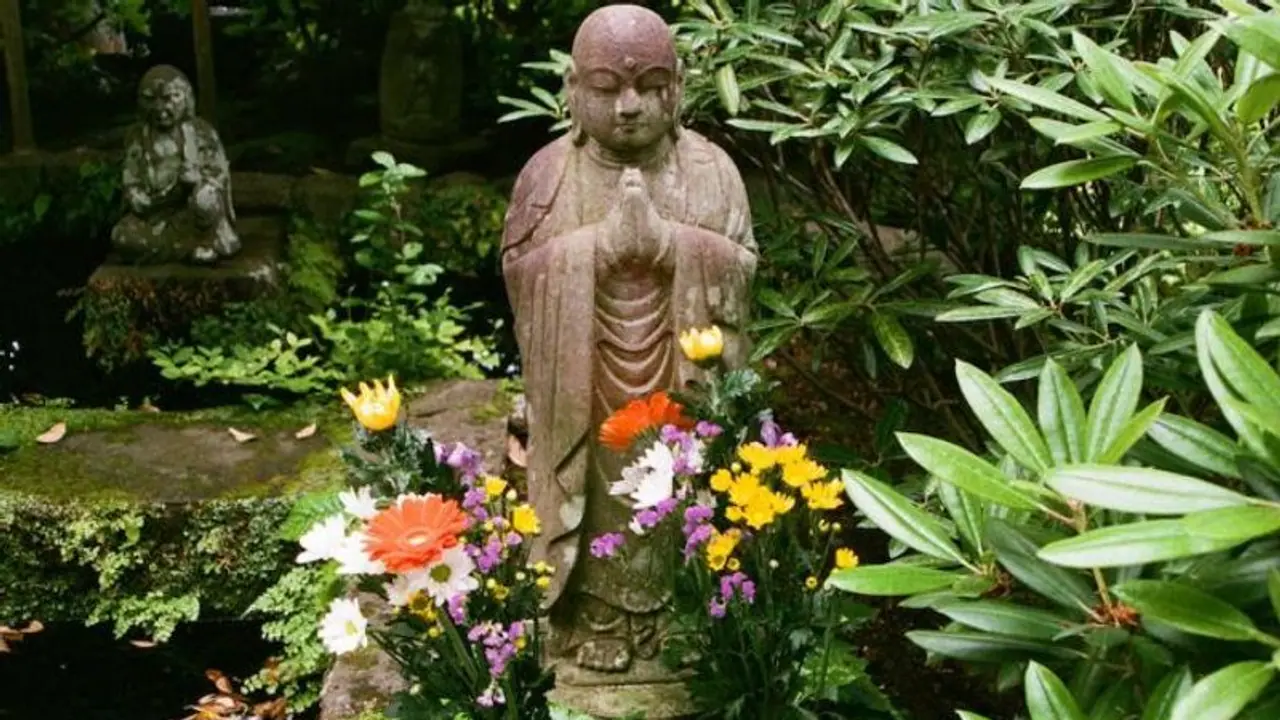Discover the philosophy and aesthetic of Wabi-Sabi, embracing rustic simplicity and the beauty of imperfection. Vandana Gujrati explores the principles of creating a Wabi-Sabi garden, where asymmetry, weathered elements, and tranquillity unite to create a unique sanctuary.
Wabi (a philosophy) and Sabi (the aesthetic) refer to a rustic, simplicity and quietness in life. It appreciates the beauty that comes with age. The Wabi Sabi garden, is a getaway to rejuvenate and retrospect. There are seven principles for achieving wabi-sabi:

* Asymmetry, irregularity
* Simplicity
* Weathered
* Natural, without pretence (i.e., authentic)
* Subtle, profound grace, not obvious
* Unbounded by convention, free;
* Tranquillity
In life, Wabi-Sabi means to accept three essential realities: nothing lasts, nothing is complete and nothing is perfect. It is said that Wabi-Sabi originated with the tea masters in the 16th century in Japan, who reacted to the popularity of mass-produced, imported porcelain. The masters advocated
local ceramics with their flaws and humble appearance. The more flawed and weathered, the more revered.
Gradually, the concept was applied to other crafts, clothing and furnishings, the tea house itself and eventually the garden. Gardens are both autobiography and art, a collaboration with nature and the self. Wabi-Sabi is a fine art of creating a garden that feels close to nature but also offers carefully thought-out spots for meditation and reflection, just the right combination of colour and blooms throughout the season, and enough structure and muscle to provide interest.
Ideas to create Wabi Sabi garden:
1. What plants are chosen and where they are placed are the garden’s bones. Plant natives and allow them to self-seed and grow naturally as opposed to being controlled by our gardening ideals.
2. Leave seed pods through winter for wildlife to feed on and enjoy.
3. Don’t view insects, disease or the death of a plant as a failure but instead as a part of the natural life cycle.
4. Enjoy the weeds in our lawns. Dandelion and clover are both tremendous food sources for bees.
5. The stones and pebbles are used to create winding paths and delineations, the rusty iron gate beckoning entrance, the trellis teasing vines up its length.
6. Place an old, broken-down chair in the flowerbeds; let the weather work its magic and the plants grow up around it until it seems rooted and organic to that place.
7. Plant gourds in an old wheelbarrow and let them spill languidly over the sides.
8. Build a stone wall; the very act of placing stone upon stone is a satisfying meditation.
9. Create paths that encourage guests to meander, with stopping points where the vista is ideal.
Stark and naked, the plants stand as vivid symbols of nature’s way: birth, death, and rebirth. The blossoms of life are easy to admire; the quiet integrity of plants gathering energy for rebirth takes a deeper appreciation. A stroll through the garden in the dead of winter is a fine place to cultivate that depth.
Nature’s grandeur will always surpass our human attempts at perfection. By following the practices of wabi-sabi, we are allowed freedom from every self-imposed expectation. This gives us the spectacular opportunity to create a perfectly imperfect garden.
